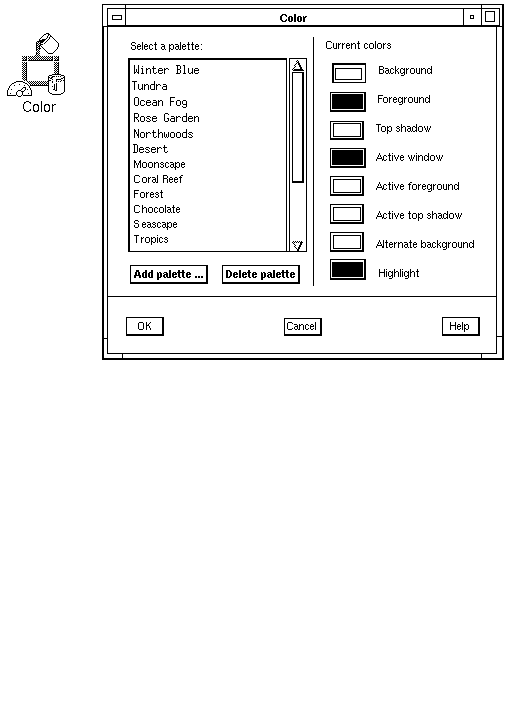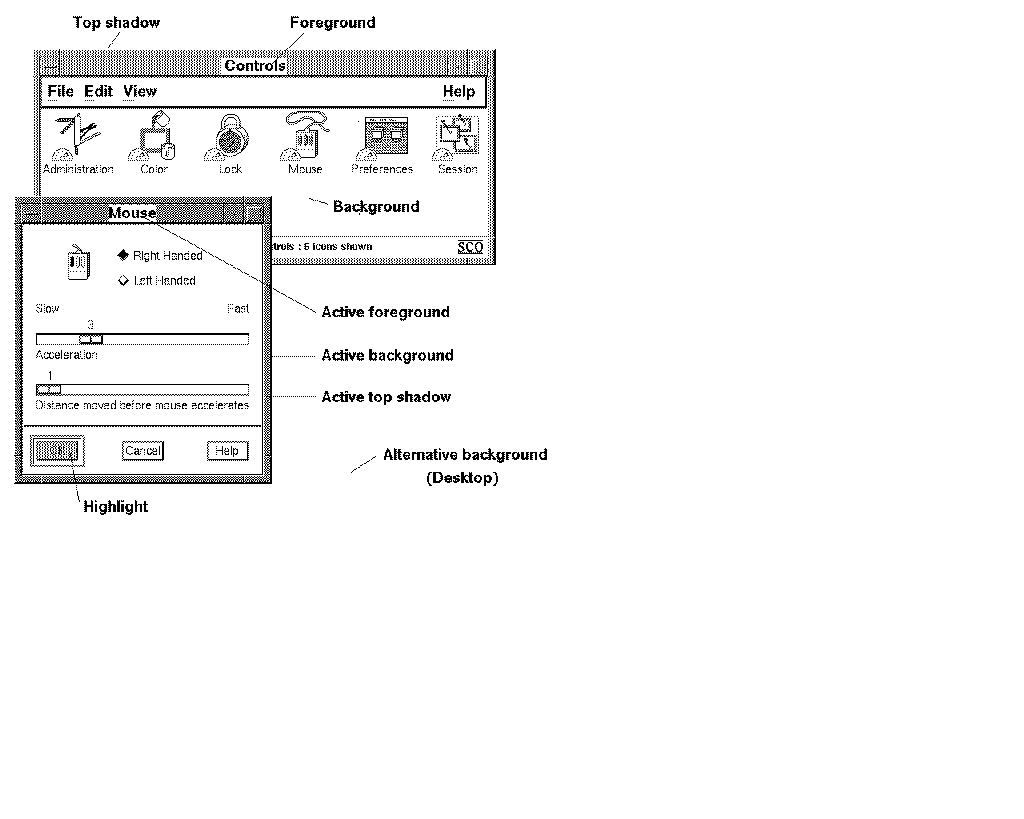
|
|
SCO OpenServer system users can use the Color utility (located in the Preferences editor) to simultaneously modify the coloring of all Desktop utilities, window frames, menus, and backgrounds. If you specify your color resources through the color API, users will be able to personalize your application's colors along with those of the rest of the Desktop.

The color API is based on palettes.
A palette is a coordinated set of eight colors, defined by the
current values of the eight color name variables.
Each variable defines the color for several graphical objects.

The active window is the window with the input focus. The scoActiveBackground, scoActiveForeground, and scoActiveTopShadow variables are used to distinguish the active window from other windows. In the supplied palettes, scoTopShadow is lighter than scoBackground, and scoBackground contrasts with scoForeground. Bottom shadows are always black. When using the color name variables for interface elements other than those listed, consider the relationships of the colors and how that might affect contrast or legibility.
Color palettes are automatically mapped to grayscale displays.
Because this might not always yield optimal results,
several grayscale palettes are provided.
A default monochrome palette mapping is used
on monochrome displays.
For more information about the Color utility,
see the
scocolor(XC)
manual page and the Graphical Environment Guide.
To support the Desktop color selector:
In your app-defaults file, define color resources with the color name variables listed in ``Color name variables''. The system will set the variables to the corresponding color definitions from the currently selected palette.
For example, an application that displays a calendar might include the following resource definitions in its app-defaults file:
*datebox.back.background: scoAltBackground *current.week.background: scoActiveForeground *meeting.alarm.background: scoHighlightName your app-defaults file with your application's class name, and install it in the /usr/lib/X11/app-defaults directory. For more about app-defaults files, see the Graphical Environment Guide.
Color name variables used by applications that have not been linked with this release of the SCO OpenServer system will be mapped to the default palette, Winter Blue. When a user changes Desktop colors by selecting a new palette with the Color utility, your application's colors will continue to be defined by the Winter Blue palette.
To ensure that your application will always display, even if it is run without the session manager, copy into your app-defaults file the default color resource definitions from /usr/lib/X11/sco/startup/Colors (listed below). Place these definitions before any overriding definitions of your own.
*Background: scoBackground *Foreground: scoForeground *topShadowColor: scoTopShadow *bottomShadowColor: Black *activeBackground: scoActiveBackground *activeForeground: scoActiveForeground *activeTopShadowColor: scoActiveTopShadow *activeBottomShadowColor: Black *troughColor: scoBackground *armColor: scoHighlight *highlightColor: scoForeground *selectColor: scoForeground *borderColor: Black